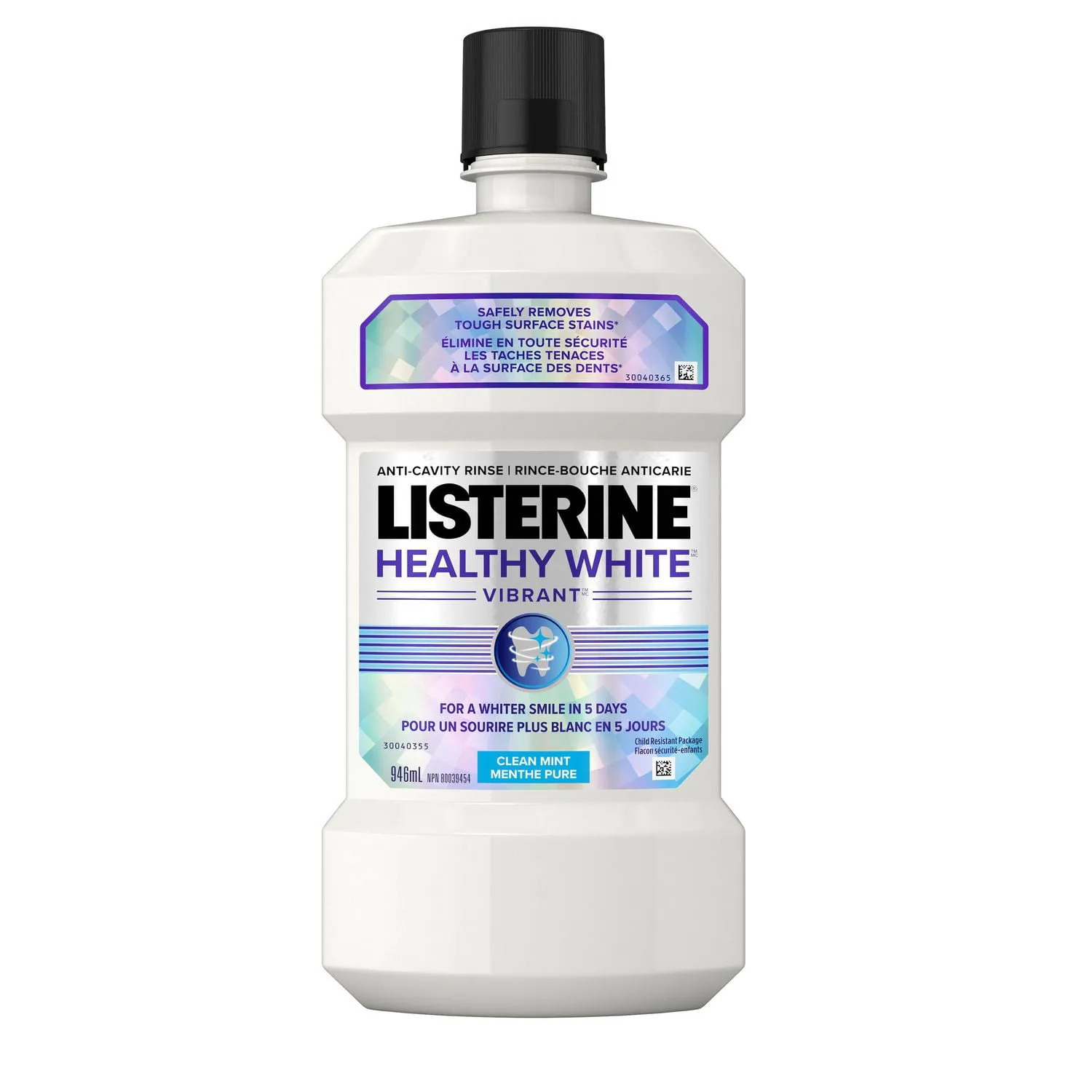Why Choose Listerine Whitening Mouthwash?
In the realm of oral hygiene, achieving a brighter, more confident smile is a common aspiration. Listerine Whitening Mouthwash, a product that has gained considerable popularity, offers a convenient and accessible solution for those seeking to enhance the appearance of their teeth. But with a myriad of teeth-whitening options available, why should one choose Listerine? The answer lies in a combination of factors, including its accessibility, ease of use, and the effectiveness of its active ingredients. Listerine, a well-established brand in oral care, provides a trusted and readily available product. The incorporation of hydrogen peroxide, a key whitening agent, further sets it apart, promising noticeable results with consistent use. Furthermore, the product’s integration into a daily oral hygiene routine makes it a seamless addition, allowing users to whiten their teeth while maintaining overall oral health. The unique formulation of Listerine whitening mouthwash is designed not only to brighten teeth but also to freshen breath and combat harmful bacteria, making it a comprehensive choice for those seeking a multi-faceted approach to oral care.
The Science Behind Whitening with Hydrogen Peroxide
The effectiveness of Listerine Whitening Mouthwash hinges on the science of hydrogen peroxide and its interaction with the stains on teeth. Hydrogen peroxide, a mild oxidizing agent, penetrates the enamel and dentin of the teeth, breaking down the stain molecules. These stain molecules, often resulting from the consumption of coffee, tea, wine, and other foods, are responsible for the discoloration of teeth. The process of oxidation effectively lightens these molecules, thereby reducing the appearance of stains and making the teeth appear whiter. The concentration of hydrogen peroxide in Listerine Whitening Mouthwash is carefully calibrated to provide effective whitening without causing excessive sensitivity or harm to the enamel. This balance is crucial, as higher concentrations can lead to increased sensitivity, while lower concentrations might not yield noticeable results. The mechanism of action involves a chemical reaction where hydrogen peroxide releases oxygen free radicals, which then interact with the stained organic molecules, breaking them down and removing discoloration. This process is a testament to the power of scientific formulations in the realm of cosmetic dentistry and oral hygiene.
How Listerine Whitening Mouthwash Works
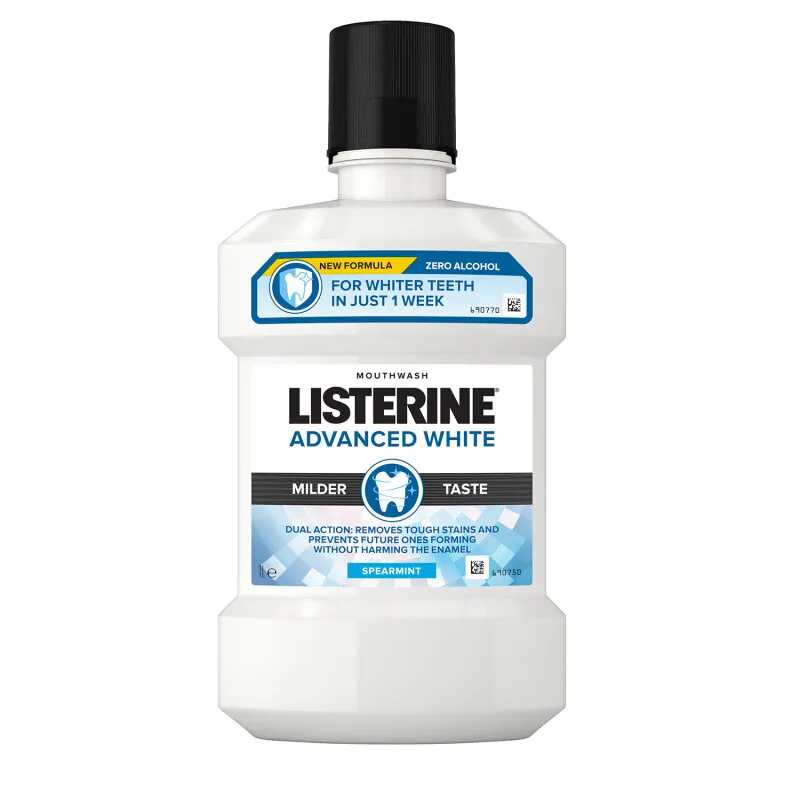
Listerine Whitening Mouthwash employs a multi-pronged approach to achieve a brighter smile. At its core, the active ingredient, hydrogen peroxide, serves as the primary whitening agent. This compound works by penetrating the enamel and dentin of the teeth, breaking down the complex organic molecules that cause staining. These stains are often the result of pigmented compounds from food, drinks, and tobacco use. The mouthwash also helps to reduce plaque and gingivitis, contributing to overall oral health. By using the mouthwash, you introduce a controlled amount of hydrogen peroxide to the tooth surface, initiating the whitening process. Regular use, as directed, ensures that the hydrogen peroxide has sufficient contact time to lighten the teeth effectively. The formulation of Listerine is designed to be gentle yet effective, ensuring that it does not harm the enamel or cause excessive sensitivity. Additionally, the mouthwash contains other ingredients, such as fluoride, which help strengthen the enamel and protect against tooth decay. This combined action makes Listerine Whitening Mouthwash a comprehensive solution for both whitening and maintaining oral hygiene.
The Role of Hydrogen Peroxide
Hydrogen peroxide is the cornerstone of the whitening action in Listerine Whitening Mouthwash. This chemical compound is a mild oxidizing agent that plays a crucial role in breaking down the stain molecules that accumulate on teeth. The mechanism of action is relatively straightforward: when hydrogen peroxide comes into contact with the stained surface of the teeth, it releases oxygen molecules. These oxygen molecules react with the stain molecules, causing them to break apart and become less visible. The concentration of hydrogen peroxide in Listerine Whitening Mouthwash is carefully controlled to balance effectiveness and safety. The goal is to provide sufficient whitening power without causing undue sensitivity or damage to the tooth enamel. The concentration also influences the contact time required for effective whitening; a higher concentration might work faster but could increase the risk of sensitivity. The role of hydrogen peroxide extends beyond mere whitening; it also contributes to the overall oral health by having antimicrobial properties, which help reduce the number of bacteria in the mouth and promote healthier gums. This dual function makes hydrogen peroxide an essential ingredient in the pursuit of a brighter, healthier smile.
The Whitening Process
The whitening process facilitated by Listerine Whitening Mouthwash is a gradual but noticeable transformation that unfolds with consistent use. The process begins with the hydrogen peroxide penetrating the porous enamel and dentin of the teeth. As the hydrogen peroxide molecules interact with the stained compounds, they initiate a chemical reaction that breaks down these discoloration-causing molecules. This process is not instantaneous; rather, it unfolds over time, with each application contributing to a reduction in staining. The duration of contact, determined by the recommended usage instructions, allows the hydrogen peroxide to work effectively without causing undue sensitivity. The whitening process is influenced by several factors, including the initial level of staining, the individual’s dietary habits, and the consistency of use. Users might observe changes within a few weeks, with the full effect becoming apparent after a month or two of regular use. It’s crucial to adhere to the recommended usage guidelines to achieve the best results and avoid potential side effects. The overall whitening process is a testament to the power of carefully formulated oral care products and their ability to gently yet effectively enhance the appearance of teeth.
Step-by-Step Guide to Using Listerine Whitening Mouthwash
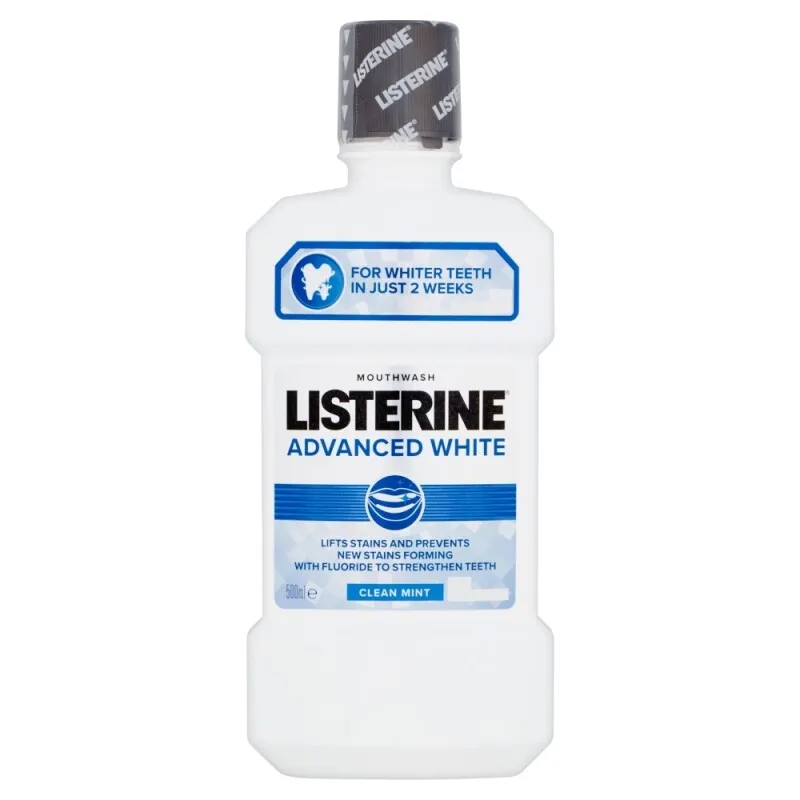
To maximize the effectiveness of Listerine Whitening Mouthwash and ensure optimal results, following a step-by-step guide is essential. Begin by thoroughly brushing and flossing your teeth to remove any food particles and plaque. This pre-rinsing step prepares the teeth surface for the whitening action. Next, measure the recommended amount of Listerine Whitening Mouthwash, as indicated on the product label. Pour the mouthwash into a cup and then transfer it into your mouth. Swish the mouthwash vigorously around your teeth and gums for the duration specified on the label, typically 60 seconds. Make sure the mouthwash reaches all areas of your mouth, including the back teeth. After swishing, spit out the mouthwash completely. Do not swallow the mouthwash. Rinse your mouth with water if desired, but avoid eating or drinking for at least 30 minutes after rinsing to allow the whitening agents to work effectively. The key to success lies in consistency; use the mouthwash twice daily, as part of your regular oral hygiene routine. By following these simple steps, you can incorporate Listerine Whitening Mouthwash seamlessly into your daily routine and gradually achieve a brighter, more confident smile.
Proper Usage for Optimal Results
Proper usage of Listerine Whitening Mouthwash is paramount in achieving optimal results. Adhering to the recommended usage guidelines ensures that the whitening process is effective and safe. The first essential is to use the mouthwash twice daily, as part of your morning and evening oral hygiene routine. Measure the correct amount of mouthwash, typically 20 ml, as directed on the label. Swish the mouthwash vigorously around your mouth for the recommended time, which is generally 60 seconds. Ensure the mouthwash reaches all surfaces of your teeth and gums. Avoid swallowing the mouthwash, as this can lead to gastrointestinal upset. After rinsing, spit out the mouthwash and avoid eating or drinking for at least 30 minutes. This allows the active ingredients to work on the teeth surfaces without interference. It is also important to use the mouthwash consistently; skipping applications will delay results. Furthermore, do not overuse the mouthwash, as this can increase the risk of side effects. Consistent and correct usage, alongside a good oral hygiene regimen, will contribute to a brighter and healthier smile.
Maximizing Whitening Effect
To maximize the whitening effect of Listerine Whitening Mouthwash, several strategies can be employed alongside consistent use. The first and most important is to maintain a rigorous oral hygiene routine. Brush your teeth thoroughly at least twice a day for two minutes each time, using a fluoride toothpaste. Floss daily to remove plaque and food particles from between your teeth, where the mouthwash might not reach. Limit the consumption of staining foods and beverages, such as coffee, tea, red wine, and dark-colored berries. If you do consume these items, rinse your mouth with water immediately afterward to minimize staining. Avoid smoking and tobacco use, as these habits are major contributors to tooth discoloration. Consider using a whitening toothpaste in conjunction with the mouthwash to provide a synergistic effect. Regularly visit your dentist for professional cleanings and check-ups, which can remove surface stains and maintain overall oral health. Following these guidelines will enhance the whitening action of Listerine Whitening Mouthwash and contribute to a significantly brighter, more radiant smile.
Maintaining Your Bright Smile
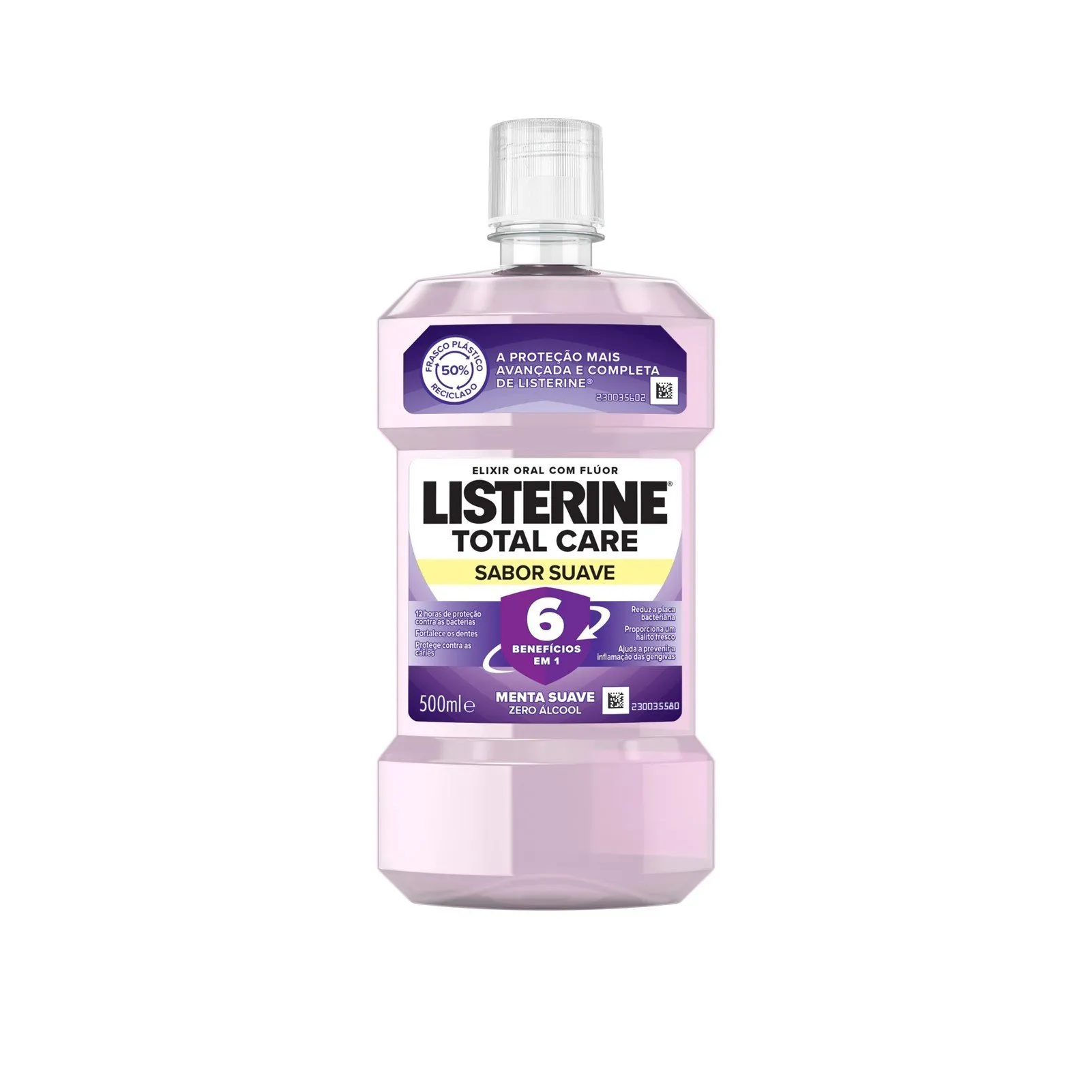
Maintaining the results achieved with Listerine Whitening Mouthwash requires a consistent and proactive approach to oral hygiene. Regular brushing and flossing are fundamental to preserving the brightness of your teeth. Brush your teeth at least twice a day for two minutes each time, using a fluoride toothpaste. Floss daily to remove food particles and plaque from between your teeth, where the mouthwash cannot reach. This meticulous cleaning prevents the buildup of staining substances. Limiting the consumption of staining foods and beverages, such as coffee, tea, red wine, and dark-colored berries, is also crucial. If you do consume these items, rinse your mouth with water immediately afterward to minimize their impact. Regular dental check-ups and professional cleanings are vital to maintain your bright smile. Dentists can remove surface stains and address any underlying oral health issues that might affect the appearance of your teeth. Consider using a whitening toothpaste to complement your Listerine Whitening Mouthwash routine, providing an extra boost to your whitening efforts. By combining these practices, you can enjoy a long-lasting, vibrant smile and maintain the confidence that comes with it.
Diet and Lifestyle
Diet and lifestyle choices play a significant role in maintaining the brightness of your smile and maximizing the effectiveness of Listerine Whitening Mouthwash. A balanced diet, rich in fruits, vegetables, and other healthy foods, supports overall oral health. However, certain foods and beverages are known to stain teeth, including coffee, tea, red wine, dark-colored berries, and artificial colorings. Moderating the consumption of these items can significantly reduce the likelihood of tooth discoloration. If you do consume staining foods or drinks, rinse your mouth with water immediately afterward to minimize their impact. Lifestyle choices also affect your teeth’s appearance; smoking and tobacco use are major contributors to tooth staining. Quitting these habits is one of the most effective ways to maintain a bright smile. Furthermore, maintaining a regular oral hygiene routine, including brushing and flossing, is essential. The combination of a healthy diet, mindful consumption of staining substances, and good oral hygiene practices creates a supportive environment for Listerine Whitening Mouthwash to effectively whiten and maintain a brighter smile.
Oral Hygiene Routine
A comprehensive oral hygiene routine is the cornerstone of maintaining a bright smile and enhancing the effectiveness of Listerine Whitening Mouthwash. The routine should begin with thorough brushing at least twice a day, ideally for two minutes each time. Use a soft-bristled toothbrush and a fluoride toothpaste. Make sure to brush all surfaces of your teeth, including the front, back, and chewing surfaces. Flossing daily is another essential component of the routine. Flossing removes plaque and food particles from between your teeth, where a toothbrush cannot reach. This prevents the buildup of bacteria and reduces the risk of tooth decay and gum disease. Incorporate Listerine Whitening Mouthwash into your routine by swishing it around your mouth for the recommended time, typically 60 seconds, after brushing and flossing. Ensure you reach all areas of your mouth. In addition to daily care, schedule regular dental check-ups and professional cleanings. Dentists can remove any surface stains and assess your overall oral health. Following this comprehensive oral hygiene routine will not only maximize the whitening effect of Listerine Whitening Mouthwash but also contribute to your overall oral health and well-being.
Potential Side Effects and How to Manage Them
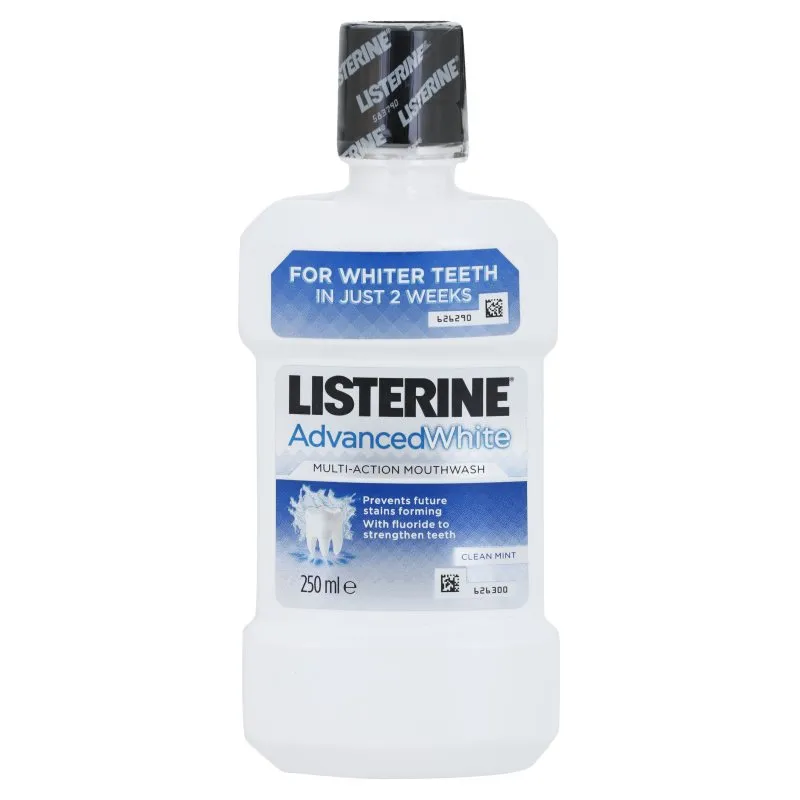
While Listerine Whitening Mouthwash is generally safe for use, some potential side effects can occur. The most common side effect is increased tooth sensitivity, particularly to hot or cold temperatures. This sensitivity is usually temporary and subsides once you stop using the mouthwash or reduce the frequency of use. To manage sensitivity, use a toothpaste designed for sensitive teeth, which contains ingredients that help block the tubules in the enamel, reducing nerve sensitivity. Avoid excessively hot or cold foods and beverages, especially immediately after using the mouthwash. Another potential side effect is gum irritation, which might manifest as redness or soreness. If you experience gum irritation, reduce the frequency of mouthwash use or discontinue use and consult with your dentist. Some individuals might experience a burning sensation in the mouth immediately after use; this is usually temporary and is due to the alcohol content in some Listerine products. If the burning sensation is persistent or severe, consider using an alcohol-free version of the mouthwash. By being aware of these potential side effects and taking appropriate measures to manage them, you can enjoy the benefits of Listerine Whitening Mouthwash while minimizing any discomfort.
Sensitivity to Hydrogen Peroxide
Sensitivity to hydrogen peroxide is a potential side effect associated with the use of Listerine Whitening Mouthwash. This sensitivity can manifest as an increased sensitivity to hot or cold temperatures, often experienced as a sharp, brief pain when consuming these types of foods or beverages. The sensitivity arises because the hydrogen peroxide, a key whitening agent, can penetrate the enamel of the teeth, affecting the nerves within. The degree of sensitivity varies from person to person, depending on factors such as the thickness of the enamel, the presence of any existing dental work, and individual susceptibility. To manage sensitivity, it’s essential to adjust your usage of the mouthwash. If you experience sensitivity, you can reduce the frequency of use to once a day or even every other day. Using a toothpaste formulated for sensitive teeth can help; these toothpastes contain ingredients like potassium nitrate, which blocks the nerve signals and reduces sensitivity. Additionally, avoiding highly acidic foods and beverages can help, as these can exacerbate the sensitivity. In more severe cases, consult your dentist, who may recommend alternative whitening methods or treatments to alleviate the discomfort and prevent long-term damage.
Alternatives to Listerine Whitening Mouthwash
If Listerine Whitening Mouthwash doesn’t suit your needs or if you’re seeking alternative approaches to teeth whitening, several options are available. Whitening toothpastes, which contain mild abrasives and sometimes hydrogen peroxide or other whitening agents, are readily available and can help remove surface stains. The effectiveness of whitening toothpastes is generally milder compared to mouthwash, but they are often a good option for daily use. Whitening strips are another popular alternative. These thin, flexible strips are coated with a whitening agent, typically hydrogen peroxide, and applied directly to the teeth. Results can be noticeable, and they offer a convenient way to whiten teeth at home. For a more professional approach, over-the-counter whitening gels and trays can be used. These involve custom-fitted trays that hold a whitening gel against the teeth, providing more intensive treatment than strips or toothpastes. Furthermore, consider professional teeth whitening performed by a dentist. This option involves using a higher concentration of whitening agents under controlled conditions, producing more dramatic results in a shorter time. The professional options are typically more effective and faster. The best choice depends on your individual needs, the degree of staining, and your budget. Consult your dentist to determine the most appropriate option for your specific oral health needs and whitening goals.
Professional Whitening Options
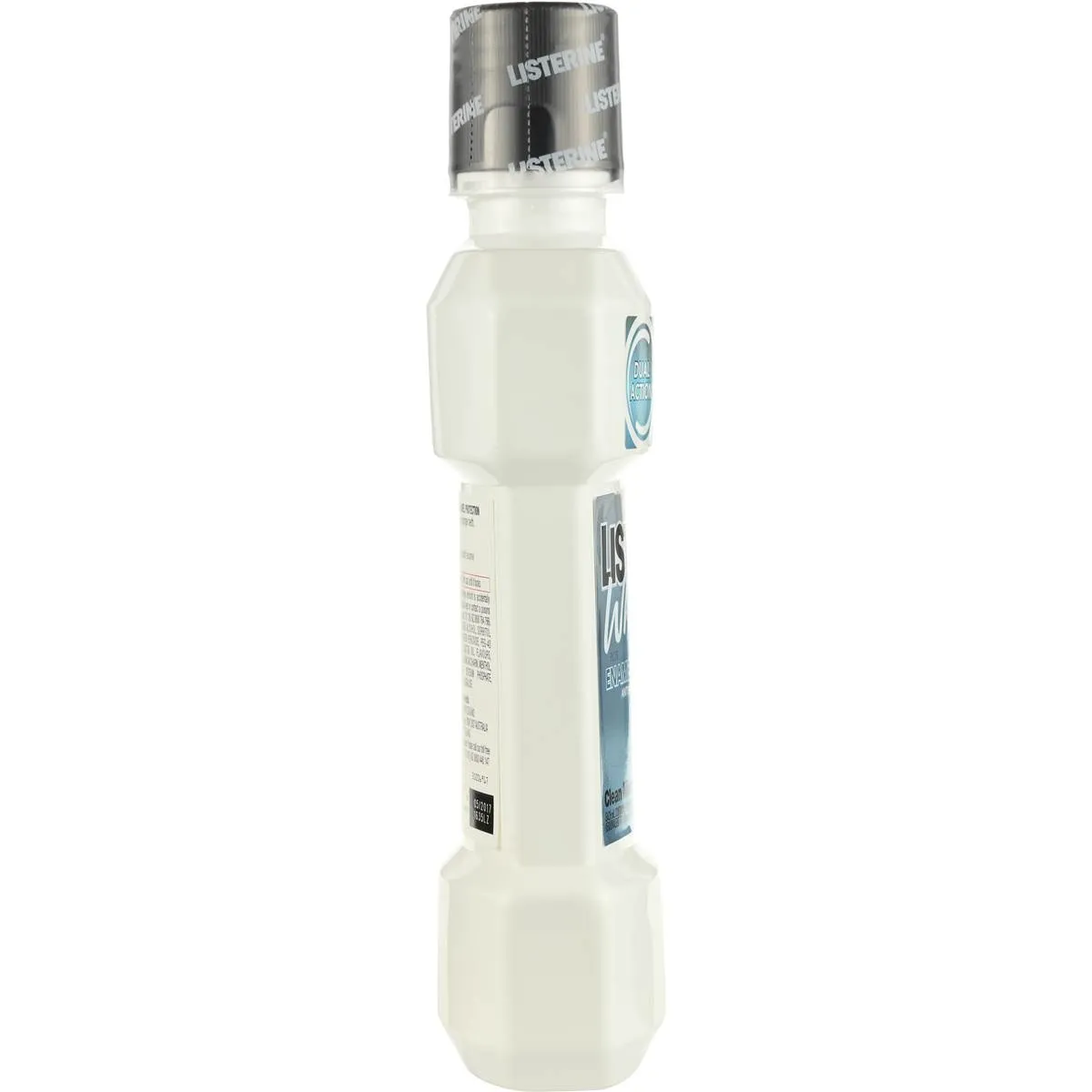
Professional teeth whitening offers the most effective and efficient way to achieve a significantly brighter smile. Performed by a dentist, these procedures utilize higher concentrations of whitening agents, typically hydrogen peroxide or carbamide peroxide, than those found in over-the-counter products. The primary advantage is the speed and intensity of the whitening process; noticeable results can often be achieved in a single appointment. There are two main types of professional teeth whitening. In-office whitening involves applying a strong whitening gel to the teeth and activating it with a special light or laser. The process usually takes about an hour and provides immediate results. The dentist closely monitors the process, ensuring the safety and effectiveness of the treatment. The second option is at-home whitening, but it’s still under the supervision of a dentist. Custom-fitted trays are created based on impressions of your teeth, and a stronger whitening gel is provided to be used at home for a specified duration. This method is more gradual but still provides superior results compared to over-the-counter options. Professional whitening offers several benefits; it ensures safety as it’s performed by a trained professional. The dentist can assess your oral health before the procedure and address any existing issues, like cavities or gum disease. The dentist also can provide more tailored treatment to your individual needs. While professional whitening is generally more expensive than over-the-counter options, it provides the most predictable and dramatic results, making it a worthwhile investment for those seeking a dramatically brighter and more confident smile.
